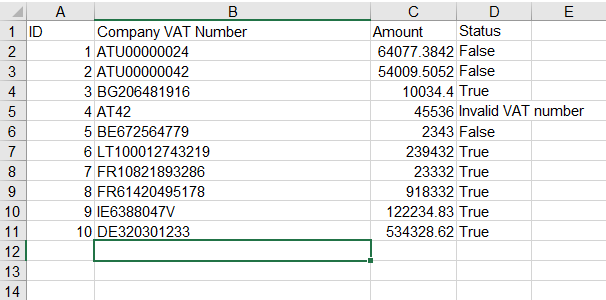eFlow Processing and Shift4: Pioneering Fraud Automation
Values reported per day
Processing time
Saving per month
In the accelerating landscape of finance and payment technologies, automation emerges as a transformative force.
Leading this charge is eFlow Processing, renowned for its customer care and advanced technology in enhancing financial operations. Their latest project, a robot designed in partnership with Capto to manage daily fraud and chargeback information from their partner Finaro, marks a significant stride in financial automation. Finaro, acclaimed in the finance sector and recently acquired by payment processing giant Shift4, is at the heart of this initiative.
This cutting-edge fraud robot is a testament to the power of automation in business optimisation. This article explores the impact of this automation tool, shedding light on its capabilities, advantages, and the wider implications for the finance industry.
The problem
Confronted with vast financial data, the business had a roadblock … it was impossible to handle 800,000 values a day and filter through 6 categories of reports entirely manually on a daily basis. Performing this process means delivering live fraud & chargeback information to clients which is key to ensure the correct process of merchant payments. Operating those tasks manually meant also a higher risk of errors, delays in payment analysis & a real strain to the company resources in managing these critical operations effectively.
The Solution
Enter Capto’s solution:
A custom-designed robot that automates the process while leveraging Capto’s experience in the payment industry. The robot securely manages the data flow and reports the data coming from Shift4 in minutes, enabling near-to-live analysis of all merchant transactions.
The process is simple:
The robot autonomously starts every morning, connecting to Finaro’s online platform and gathering all reports published on the previous day. Once all the reports are collected, the robot categorizes the different types of transactions and sorts them per merchant before importing them into one single database.
BEFORE
Simply NOT doable
AFTER
Live data ready in
In-Depth Look at Capto's Automation
Step 1: Initialization and Secure Connection
Activity: The Daily Finaro Robot starts automatically on each business day at a pre-set time.
Process Detail: It establishes a secure connection to Finaro’s web-based platform using advanced encryption protocols to ensure data privacy and security.
Step 2: Data Retrieval
Activity: The robot identifies and retrieves the latest financial transaction reports generated for the previous day.
Process Detail: It focuses on comprehensive transaction data, including but not limited to sales transactions, refunds, chargebacks, and fraud alerts. These reports are critical for financial reconciliation and all fraud management processes.
Step 3: Sorting and Categorization
Activity: Upon retrieval, the robot sorts the reports based on predefined categories such as merchant ID, transaction type (e.g., sale, refund, chargeback), and fraud status.
Process Detail: This step is vital for organizing the data in a manner that simplifies analysis and reporting. The categorization is customized to meet the specific needs of eFlow Processing and its financial operations, ensuring that all relevant data points are efficiently segmented.
Step 4: Data Cleansing and Preprocessing
Activity: Before further processing, the robot cleanses the data to remove duplicates and corrects any discrepancies.
Process Detail: This includes validating transaction details, standardizing data formats, and reconciling transaction amounts. This step is crucial for maintaining data integrity and reporting accuracy.
Step 5: Data Integration and Database Update
Activity: The robot then integrates the sorted, categorized, and cleansed data into a central database.
Process Detail: It uses sophisticated algorithms to ensure that each piece of data is accurately matched and integrated with existing records. This database serves as the foundation for all subsequent financial analysis and reporting, enabling real-time access to up-to-date financial information.
Step 6: Distribution and Notification
Activity: Finally, the robot sends the integrated data to designated stakeholders within eFlow Processing and, if applicable, to external partners.
Process Detail: These notifications include but are not limited to daily activities, status and error handling (if any). The notifications are tailored to the specific requirements of eFlow Processing, providing insights into financial performance, operational risks, and areas for improvement.
Why bother automating your Fraud Management Process?
Time Savings
Reports are prepared in mere seconds, dramatically reducing the manual work required.
Error Reduction
Automation minimizes human error, ensuring accuracy in data entry completion.
Enhanced Efficiency
Secure, automated operations streamline the entire process.
Ready to automate your Fraud Management & Reporting
Reach out to us today to discuss how we can meet your specific needs with a tailored solution and usher in a new era for finance and payment processing 🙂
eFlow Processing and Shift4: Pioneering Fraud Automation Read More »












